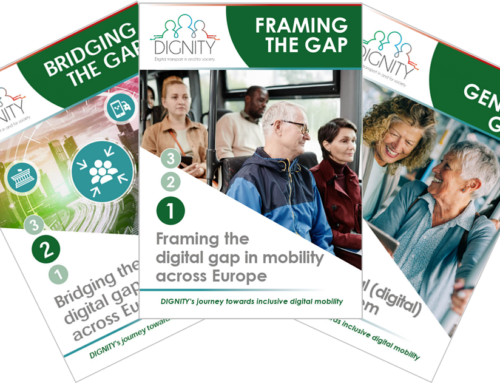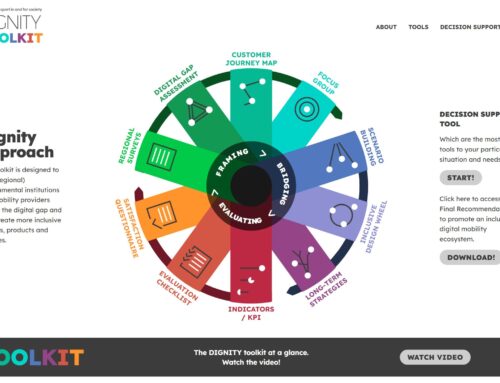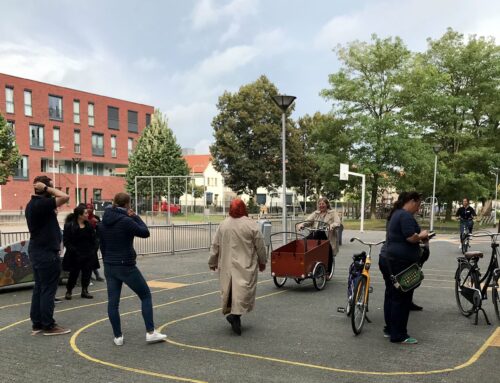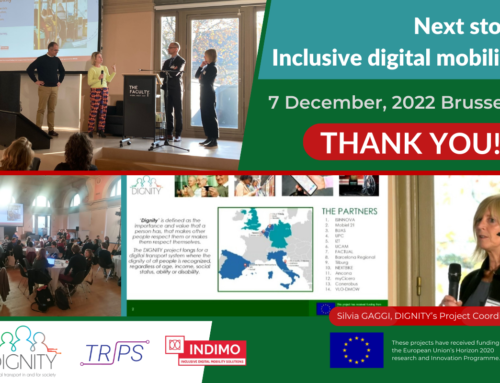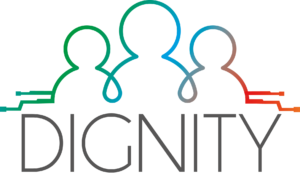One of DIGNITY’s tools is its user survey, which investigates how people use digital technologies. It has already been completed in Barcelona, where it found out:
- The availability of different technologies
- If people use digital technology for transportation
- The factors affecting use of different technologies
93% of Barcelona’s metropolitan population have access to the internet and more than 85% own a smartphone. But how exactly are people using the technologies they have available? 
Approximately 85% of the respondents with access to digital technologies said they use the internet or a smartphone every day or almost every day. 6% have never used the internet, and 12% have never used a smartphone. These latter two are DIGNITY’s target groups.
Over 90% of interviewees have never used car sharing, carpooling, or on-street scooter or motorbike hire services
Perhaps surprisingly, just 3% of respondents said they have used the above-mentioned digital services at least once in the three months preceding the survey. Paying for parking using a mobile phone, digital services for taxi hire and on-street bicycle hire fared a little better, with 10% of respondents saying they used these services at least once in the three months before the survey.  This data shows that many digital services for mobility still have very low take-up rates. It would appear that the majority of people are only using the internet or a smartphone to plan trips, navigate, and check timetables.
This data shows that many digital services for mobility still have very low take-up rates. It would appear that the majority of people are only using the internet or a smartphone to plan trips, navigate, and check timetables.
 Where do they find their travel information? The DIGNITY results show that just 1.5% do not look up schedules, routes, cancellations or traffic reports because they already know it and do not expect any additional issues. 2.2% do not know where to find it. The most popular way to get informed is by using a search engine (39.8%), followed by navigation apps (32.9%). Interestingly, 7.7% say they use word-of-mouth to obtain travel information, and 21% say they use other channels, including the Barcelona Metropolitan Transport (TMB) app, which is designed to provide passengers with a comprehensive range of travel information.
Where do they find their travel information? The DIGNITY results show that just 1.5% do not look up schedules, routes, cancellations or traffic reports because they already know it and do not expect any additional issues. 2.2% do not know where to find it. The most popular way to get informed is by using a search engine (39.8%), followed by navigation apps (32.9%). Interestingly, 7.7% say they use word-of-mouth to obtain travel information, and 21% say they use other channels, including the Barcelona Metropolitan Transport (TMB) app, which is designed to provide passengers with a comprehensive range of travel information.
Does gender correlate with confidence in using digital technology to plan travel?
 Of the 75% of survey respondents who say they feel confident in their ability to successfully plan an unfamiliar journey on public transport using a smartphone, the majority are male (see Figure 1). Many females do feel confident, but are almost two times more likely to be uncertain in their ability compared to males. When it comes to concerns regarding the safety of public transport, a similar gender gap can be observed (see Figure 2). More than double the number of women feel “very limited” by such concerns compared to men. More males than females said that they feel “not at all limited”.
Of the 75% of survey respondents who say they feel confident in their ability to successfully plan an unfamiliar journey on public transport using a smartphone, the majority are male (see Figure 1). Many females do feel confident, but are almost two times more likely to be uncertain in their ability compared to males. When it comes to concerns regarding the safety of public transport, a similar gender gap can be observed (see Figure 2). More than double the number of women feel “very limited” by such concerns compared to men. More males than females said that they feel “not at all limited”.

What can be learnt from the survey results
The results of this survey demonstrate that there are still people without access to the internet or a smartphone, and consequently digital mobility services. Even though the majority of the population do, some do not feel confident in using them, or do not know where to look up information regarding transportation. And there is still a gender gap. These divides need bridging if we are to create a sustainable, inclusive mobility system, and DIGNITY continues to work hard at analysing the issue in order to propose a solution for a new future.


